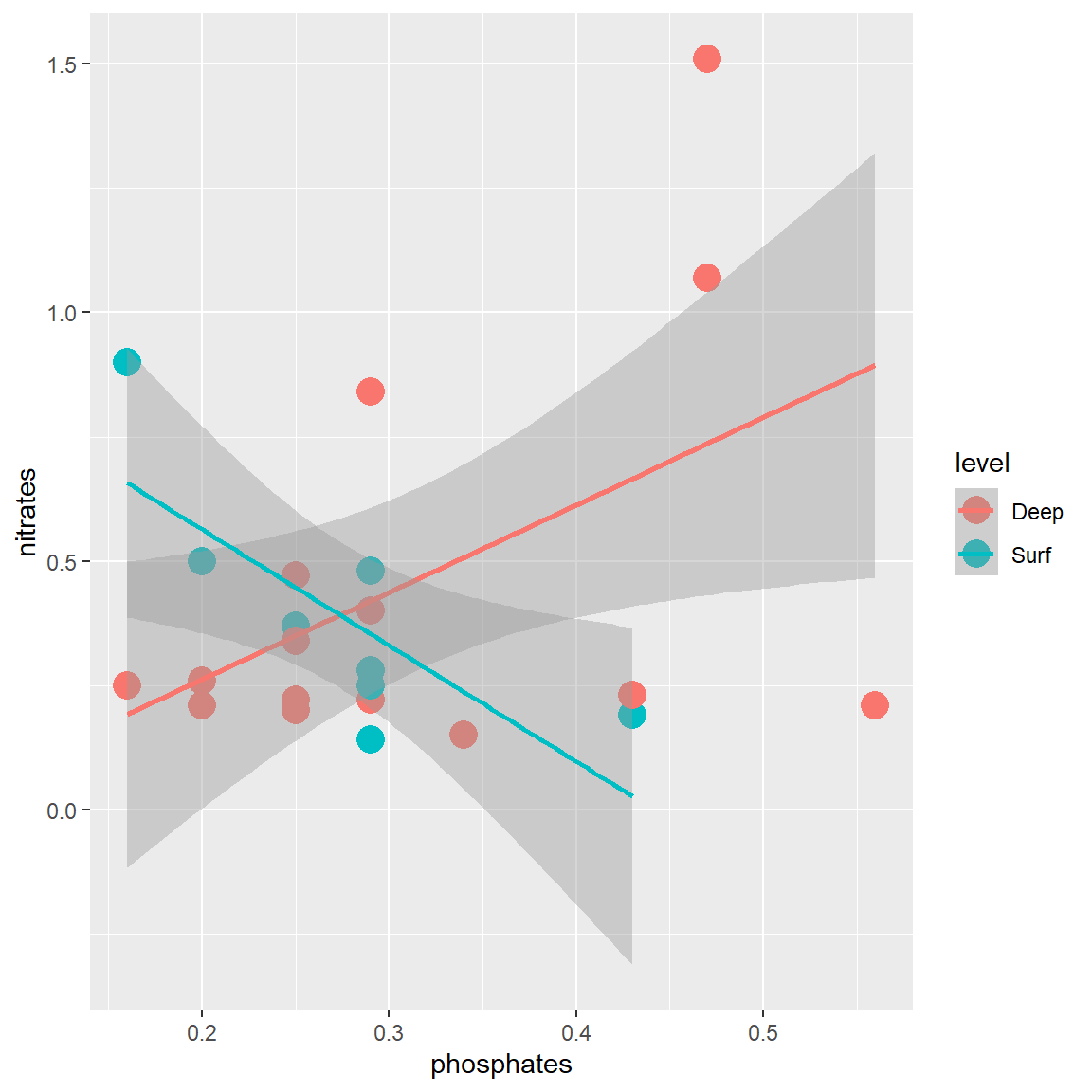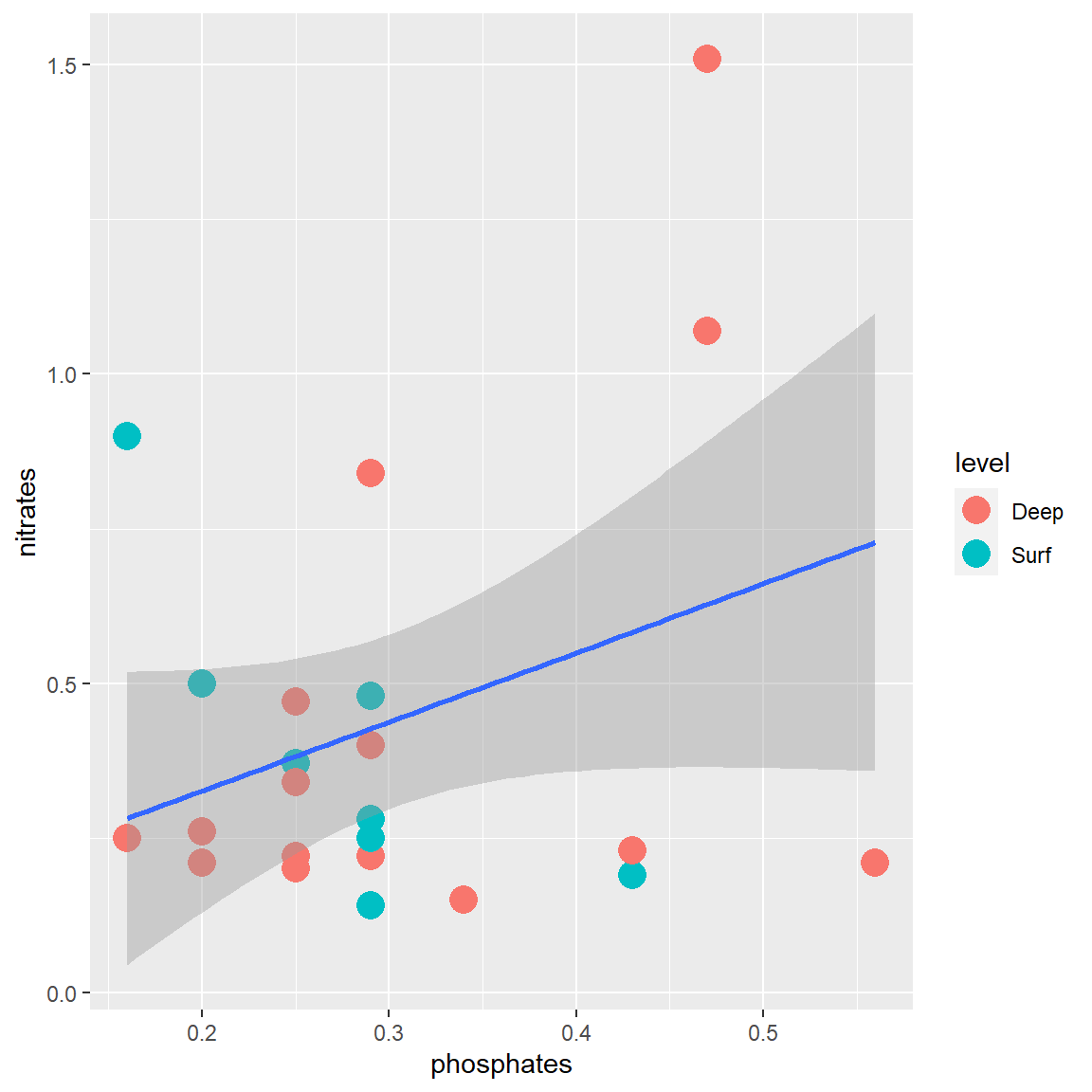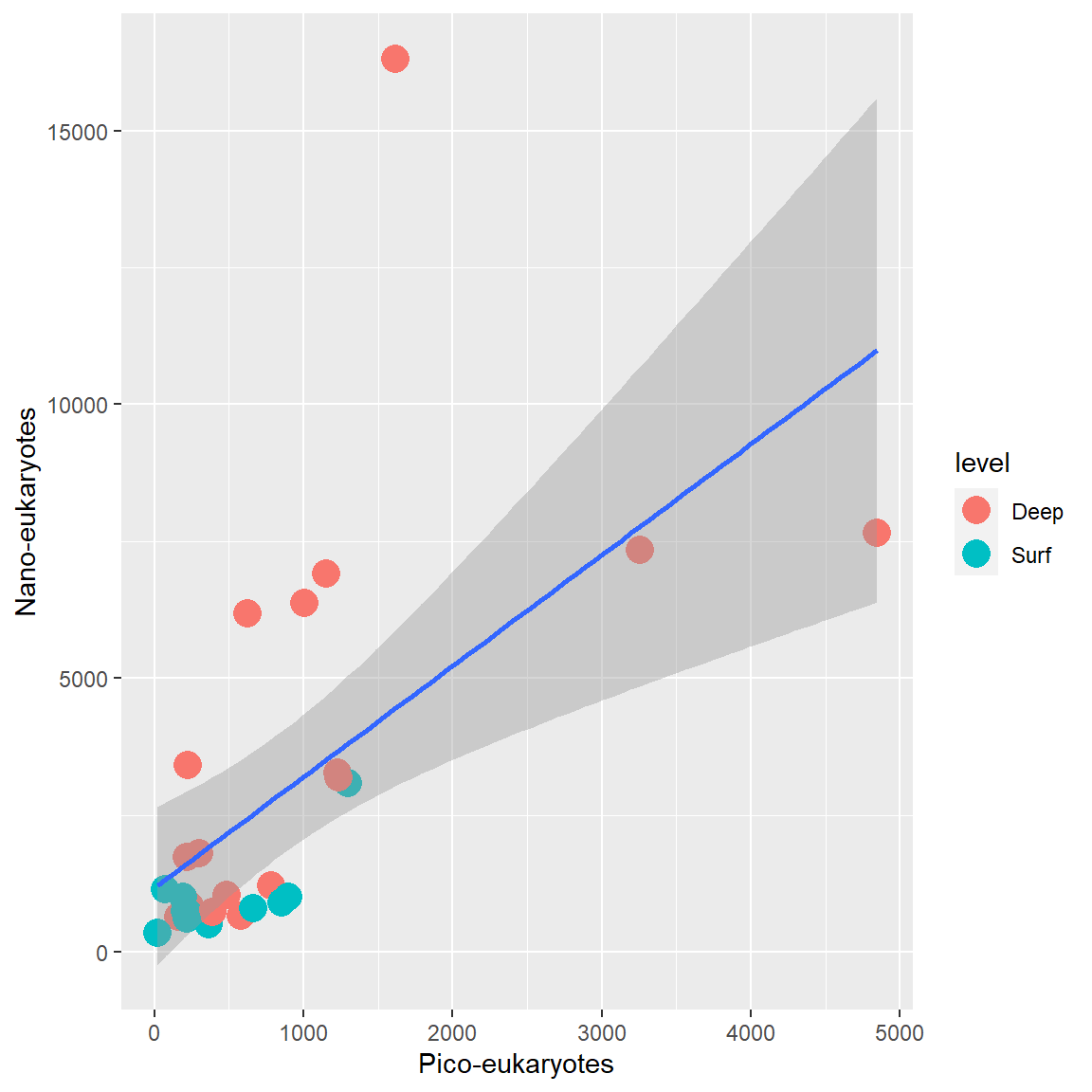
R course
Daniel Vaulot
2023-06-22




Data visualization
R - Session 03
- Graph types
- Grammar of graphics
- Playing with ggplot2
- Multiple graphs
- ggplot2 syntax
Intro to Data vizualisation
Installation and Resources
Packages
- ggplot2
- patchwork
Download
- R-session-03.zip
Reading
Resources
Workflow

Graph purposes
- Analysis graphs
- design to see patterns, trends
- aid the process of data description
- interpretation
- Presentation graphs
- design to attract attention
- make a point
- illustrate a conclusion
Source: Michael Friendly
Graph types
Jitter
- Two variables numerical

Bubble
- Two variables numerical
- Add another variable numerical

Animate
- Two variables numerical
- One variable numerical
- One variable categorical
- Animate another variable
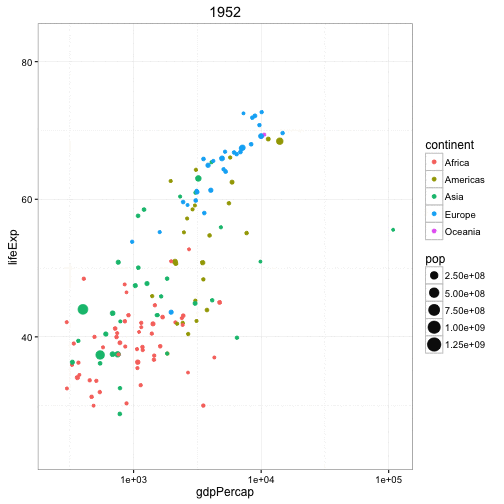
Times series
- Line graph

Bargraphs
- One variable categorical
- One variable numerical

Bargraphs
- Rotate

Bargraphs
- Two variable categorical
- One variable numerical

Boxplots
- One variable categorical
- One variable numerical but with many values
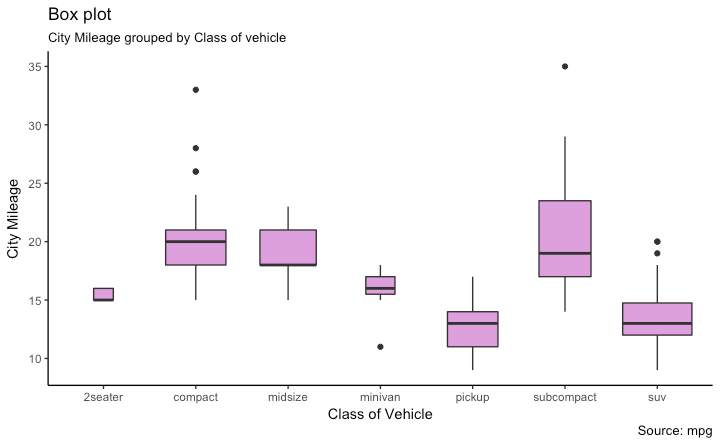
Treemaps
- One variable categorical
- One variable numerical
- Much better than pie charts

3D
- Three variable numerical
- Avoid unless it is a simple shape

Contours
- Three variable numerical
- Better than 3D

Many…

- Choose as a function of what you want to analyze or the story you want to tell
- https://www.r-graph-gallery.com/all-graphs/
ggplot2

Initialize
Load necessary libraries
Read the data
| sample number | transect | station | date | time | depth | level | latitude | longitude | picoeuks | nanoeuks | phosphates | nitrates | temperature | salinity |
|---|---|---|---|---|---|---|---|---|---|---|---|---|---|---|
| 10 | 1 | 81 | 2013-11-13 | 1899-12-31 01:00:00 | 140 | Deep | -27.42 | -44.72 | 3278 | 1232 | 0.20 | 0.26 | 17.3 | 35.9 |
| 11 | 1 | 85 | 2013-11-13 | 1899-12-31 13:30:00 | 110 | Deep | -26.80 | -45.30 | 16312 | 1615 | 0.29 | 0.22 | 21.3 | 36.5 |
| 120 | 2 | 96 | 2013-11-18 | 1899-12-31 23:50:00 | 5 | Surf | -27.39 | -47.82 | 1150 | 75 | 0.43 | 0.19 | 23.1 | 33.5 |
| 121 | 2 | 96 | 2013-11-18 | 1899-12-31 23:50:00 | 30 | Deep | -27.39 | -47.82 | 1737 | 218 | 0.43 | 0.23 | 22.6 | 33.7 |
| 122 | 2 | 96 | 2013-11-18 | 1899-12-31 23:50:00 | 50 | Deep | -27.39 | -47.82 | 853 | 234 | 0.56 | 0.21 | 20.3 | 35.9 |
| 125 | 2 | 98 | 2013-11-18 | 1899-12-31 05:00:00 | 5 | Surf | -27.59 | -47.39 | 3086 | 1300 | 0.29 | 0.25 | 23.1 | 35.7 |
| 126 | 2 | 98 | 2013-11-18 | 1899-12-31 05:00:00 | 50 | Deep | -27.59 | -47.39 | 1217 | 782 | 0.25 | 0.20 | 23.7 | 37.2 |
| 127 | 2 | 98 | 2013-11-18 | 1899-12-31 05:00:00 | 85 | Deep | -27.59 | -47.39 | 3420 | 226 | 0.25 | 0.47 | 22.9 | 37.0 |
| 13 | 1 | 86 | 2013-11-13 | 1899-12-31 17:00:00 | 105 | Deep | -26.33 | -45.41 | 6366 | 1007 | 0.34 | 0.15 | 20.9 | 36.3 |
| 140 | 2 | 101 | 2013-11-18 | 1899-12-31 12:00:00 | 5 | Surf | -27.79 | -46.96 | 500 | 366 | 0.29 | 0.14 | 23.5 | 36.5 |
A simple plot
- Choose the data set
- Choose the geometric representation
- Choose the aesthetics : x,y, color, shape etc…
The grammar of graphics
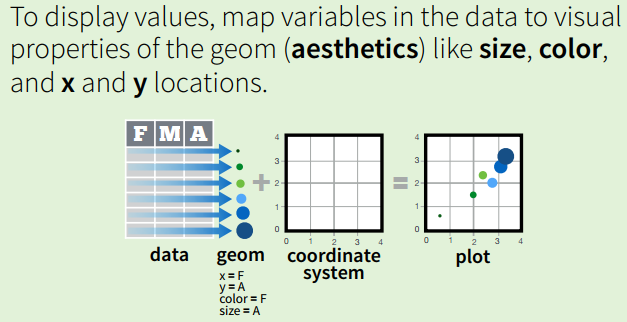
Every graph can be described as a combination of independent building blocks:
- data: a data frame: quantitative, categorical; local or data base query
- aesthetic mapping of variables into visual properties: size, color, x, y
- geometric objects (“geom”): points, lines, areas, arrows, …
- coordinate system (“coord”): Cartesian, log, polar, map
Alternatively
- Move mapping into ggplot function
Alternatively
- Remove function arguments
Makes dots bigger
- Add: size=5 outside of the aesthetics function
Color according to depth level (discrete)
- The mapping aesthetics must be an argument of the aes function
- geom_point(color=level, size=5) will generate an error…
Color according to depth level (discrete)
- The mapping aesthetics must be an argument of the aes function
- geom_point(color=level, size=5) will generate an error…
Color according to depth (continuous)
- The mapping aesthetics must be an argument of the aes function
- Add: color=depth
Symbol according to transect (continuous)
- Add: shape=transect
Error in `geom_point()`:
! Problem while computing aesthetics.
ℹ Error occurred in the 1st layer.
Caused by error in `scale_f()`:
! A continuous variable cannot be mapped to the shape aesthetic
ℹ choose a different aesthetic or use `scale_shape_binned()`Symbol according to transect (continuous)
- Add: shape=as.character(transect)
Panels depending on one variable
Adding a regression line
- Add: geom_smooth()
- You can choose the type of smoothing “lm” is for linear model
Adding a regression line
- If the mapping is in the ggplot function is for all the geom….
Finalizing the graph
- Adding labels and legends
Multigraphs (patchwork package)
First graph
Second graph
Package patchwork
- Other packages:
gridExtracowplot
Package patchwork
- Adding annotation
- Collecting legends
Package esquisse
ggplot2 syntax
Anatomy of a plot

Geometries

Continuous x and y
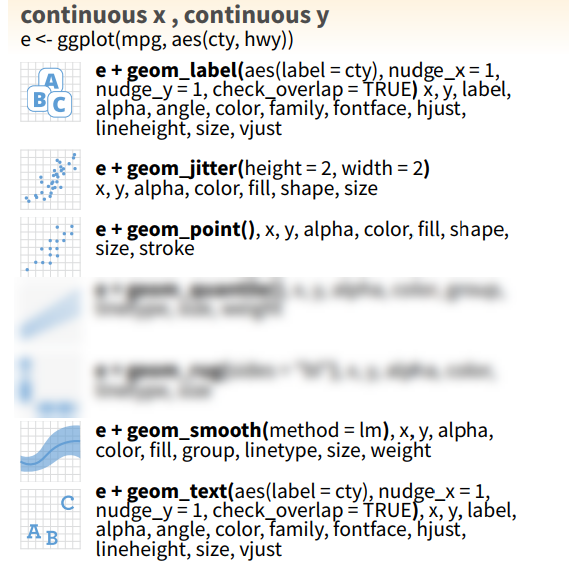
Plotting error

Discrete x - Continuous y

Continuous x

3D

Modifying axis and scales

Palettes

Palettes
- Use color blind friendly palettes
- viridis (e.g.
scale_colour_viridis_c())
- viridis (e.g.

Themes

Extensions
Let’s do a graph
Your mission
Reproduce graph on right
- Only transect 2
- One panel per station
- Increasing depth
- Log scale for x
- White background
Instructions
- Work by group of 2 (1 expert, 1 less expert)
- Send code and results by element.io by private message to Daniel
- Do not search Internet for precise solution
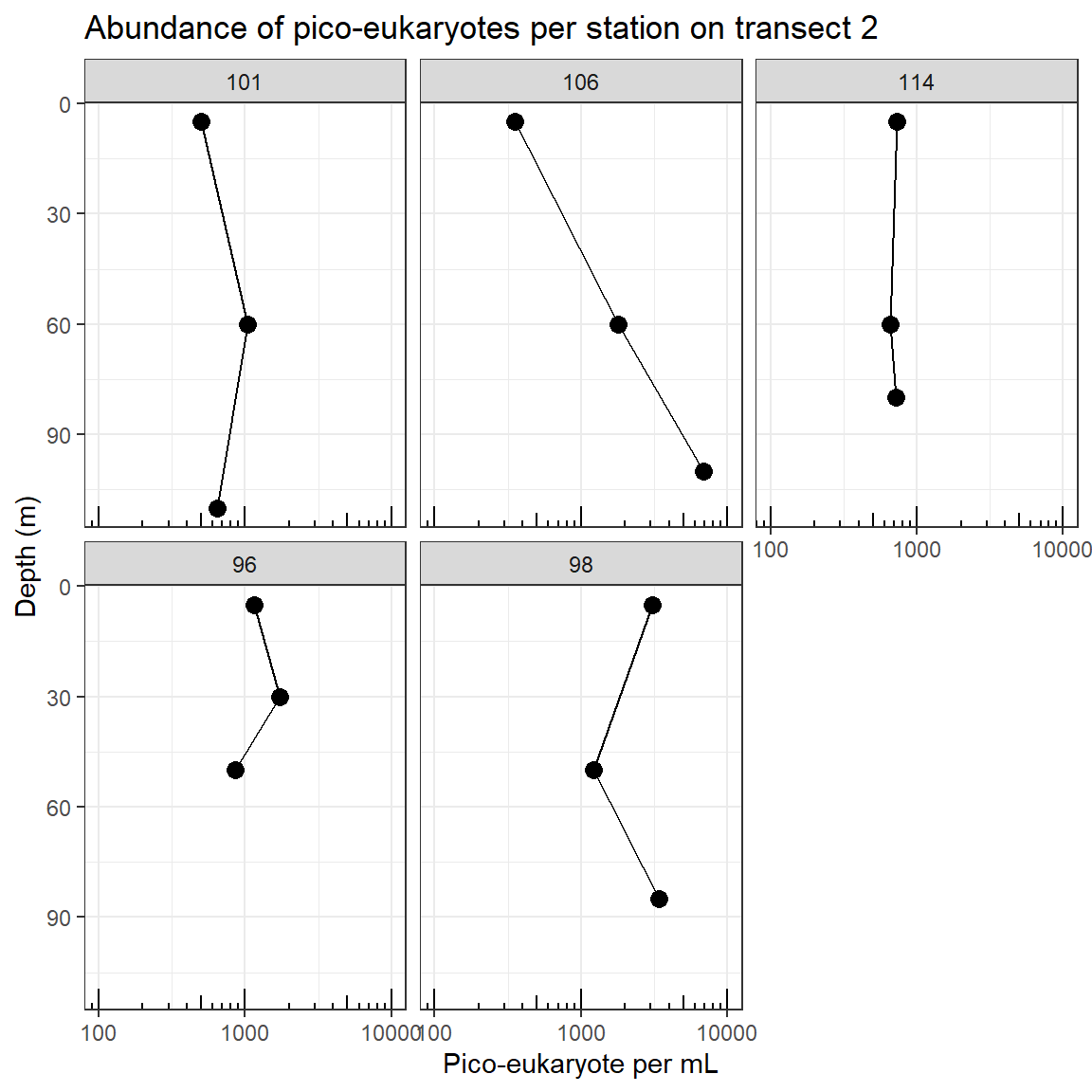
Recap
Conceptualize your graph before coding
Decide what element is fixed and what varies
It takes time to get what you want…
Exploratory vs. final
Next time: Markdown and Quarto
R - data vizualization
R course Daniel Vaulot 2023-06-22 Data visualization








